Seven Common Plating Defects and Control Methods
7 Common Plastic Plating Defects and Control Plan
Plastic electroplating is a process that requires precision and expertise. However, even with advanced technology, defects can occur during production. Understanding these defects and implementing control methods are crucial to ensuring high-quality products. This guide outline seven common defects in plastic electroplating and provide strategies to address them:
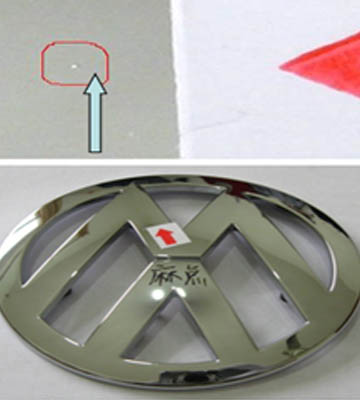
1. Pitting
Pitting is a plating defect characterized by small bumps or bright spots on the surface of a part. This issue typically arises when tiny impurities are deposited onto the surface during the plating process, disrupting the uniformity of the coating.
Cause:
Impurities in plating tank
Corrective actions:
It’s essential to use purified water during the plating process to minimize the introduction of impurities. Additionally, strengthening the filtering system to effectively remove contaminants from the plating bath can help ensure a smooth and uniform coating, reducing the risk of pitting.
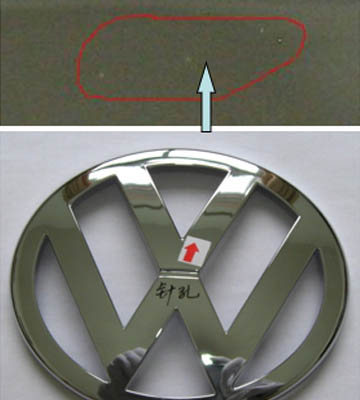
2. Pores
Pores, resembling small pits or pinholes on the surface, are often caused by hydrogen gas accumulating on the part’s surface during the electroplating process. These defects not only compromise the integrity of the plating layer but, more importantly, detract from its visual appeal.
Cause:
Inadequate and uneven air agitation in the plating bath.
Actions:
Improve air agitation and effectively displace the hydrogen from the surface of the part.
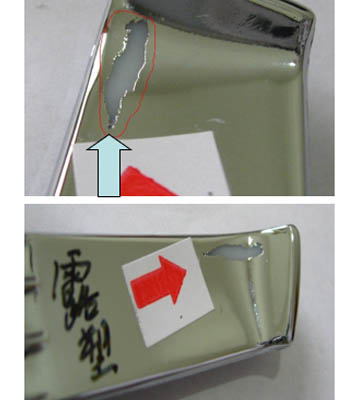
3. Skip Plating
Skip plating, also known as uneven plating or mis-chrome, is a common plating defect where certain areas of a part’s surface remain unplated. This issue typically arises when electroless nickel is not properly deposited, leading to the failure of subsequent plating layers.
Cause:
The primary causes of skip plating include high internal stress in the molded part, which can hinder the even deposition of plating material. Additionally, slow reactions of electroless nickel or poor deposition in the plating bath can contribute to uneven coverage.
Improvements:
To address skip plating, it’s crucial to adjust molding parameters to reduce internal stress in the part. Additionally, improving the concentration of the electroless nickel solution can help achieve a more uniform and effective deposition, ensuring successful plating across the entire surface.
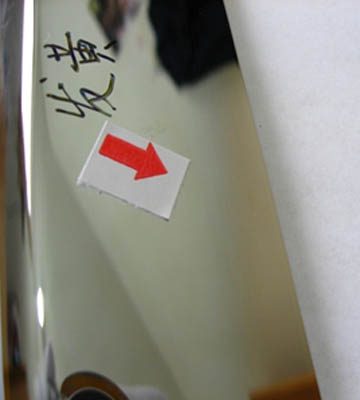
4. Yellowing
The color of the partial surface turns yellow. Mainly due to that the chrome layer (silver white) is not plated to reveal the color of nickel (white to yellow).
Cause:
The chrome plating current is too small.
Actions:
Improve chrome plating current
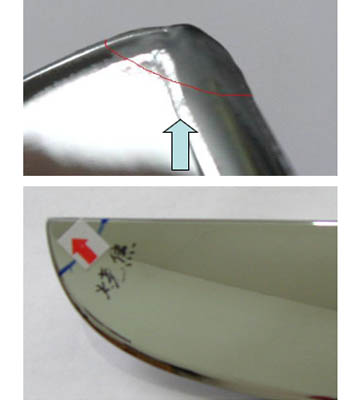
5. Scorch
Scorching refers to the protrusion or roughness that appears on the sharp corners of plated parts.
Cause:
The main cause is excessive current during plating, particularly at sharp corners, where the current density is higher.
Corrective Actions:
To reduce the current applied during the plating process. This ensures a smoother, more even plating layer and minimizes roughness or protrusions on sharp edges.

6. Blistering
Sometimes blistering appears instanly after plating and sometimes it appears as delayed blistering.
Cause:
Poor Adhesion: Insufficient surface preparation or improper bonding between chrome and plastic.
Contamination: Residues like oils or dust preventing proper plating adhesion.
Improper Plating Process: Incorrect plating thickness or current settings.
Moisture Trapping: Moisture between the plastic and chrome causing blisters.
Thermal Expansion Mismatch: Differences in how the plastic and chrome expand under heat.
Actions:
Use approved plating grade ABS resin
Adjust etching process (concentration, temp, time)
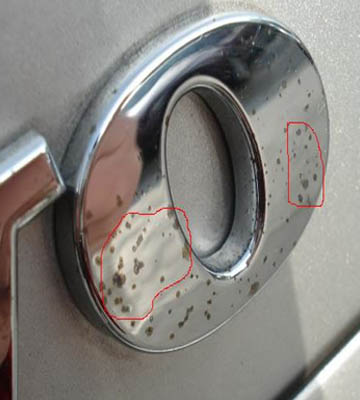
7. Rust
Rusting occurs when the surface of a plated part is corroded, discolored, or tarnished. This defect is typically the result of poor corrosion resistance due to insufficient plating thickness or defects in the plating process.
Cause:
The primary causes of rusting include poor conductivity of the fixturing racks, which leads to insufficient plating thickness and the formation of micropores. Additionally, insufficient potential between the layers during plating can hinder the protective qualities of the coating, making the part more susceptible to rust.
Corrective Measures:
To redesign or replace the racks to improve conductivity, ensuring a more even and thicker plating layer. Adjusting the potential between plating layers can also help achieve better corrosion resistance and protect the part from rust.
People Also Viewed
What Is Electroplating?
What Is The Difference Between Trivalent Chrome And Hexavalent Chrome?
What Is PVD?
Advantages And Disadvantages Of Trivalent Chromium Plating
About CheeYuen
Established in Hong Kong in 1969, CheeYuen is a solution provider for plastic part manufacturing and surface treatment. Equipped with advanced machines and production lines (1 tooling and injection molding center, 2 electroplating lines, 2 painting lines, 2 PVD line and others) and led by a committed team of experts and technicians, CheeYuen Surface Treatment provides a turnkey solution for chromed plastic, paint & PVD parts, from tool design for manufacturing (DFM) to PPAP and eventually to finished part delivery across the globe.
Certified by IATF16949, ISO9001 and ISO14001 and audited with VDA 6.3 and CSR, CheeYuen Surface Treatment has become a widely-acclaimed supplier and strategic partner of a great number of well-known brands and manufacturers in automotive, appliance, and bath product industries, including Continental, ALPS, ITW, Whirlpool, De’Longhi and Grohe, etc.
Have Any Comments On This Post Or Future Topics?
Feel free to reach out to us at : peterliu@cheeyuenst.com
CONTACT US
Write your message here and send it to us